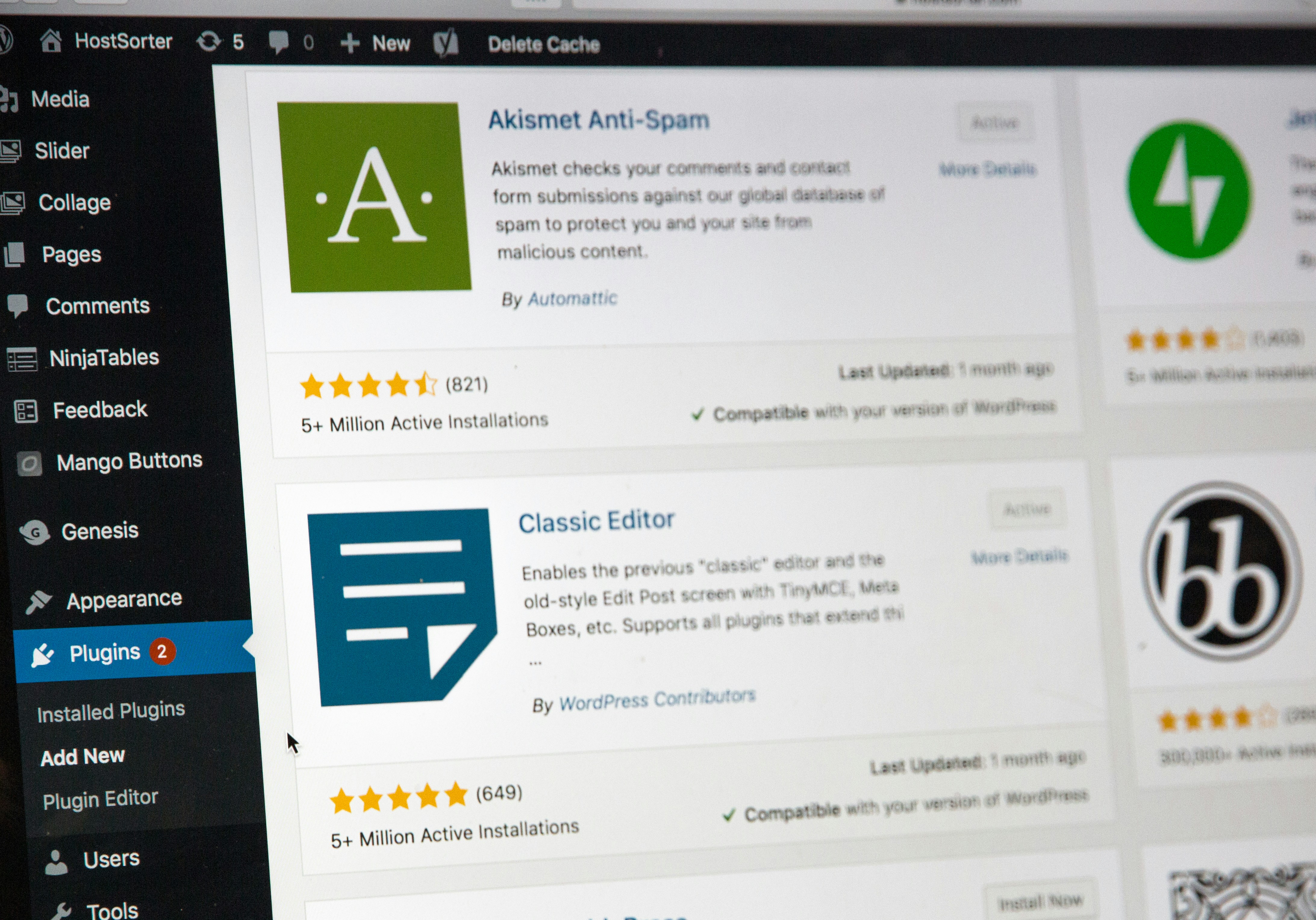WordPress in 2025: A Critical Review of Its Challenges and Competitors

The Current State of WordPress
As of 2025, WordPress continues to dominate the content management system (CMS) landscape, powering over 40% of websites worldwide. This widespread adoption underscores WordPress’s robust flexibility and user-friendly interface, making it an appealing choice for both novice and experienced developers. The platform has evolved to address a variety of needs, ranging from simple blogs to complex e-commerce sites, thanks to an extensive library of plugins and themes that enhance functionality and customization.
In recent updates, WordPress introduced several improvements focused on performance optimization, security enhancements, and user experience. The introduction of the Full Site Editing feature has allowed users to have greater control over their site’s design without delving into code. Furthermore, the platform has made strides in accessibility, ensuring that website creation remains inclusive for individuals with disabilities. The commitment to open-source development has fostered an engaged community that continually contributes to the platform’s innovation.
However, WordPress faces significant challenges as it navigates an increasingly competitive market. Alternatives such as Wix, Squarespace, and Shopify have gained traction, appealing especially to users who prefer an all-in-one solution that simplifies the site-building process. Additionally, the rise of decentralized web technologies poses a potential threat to WordPress’s centralized model, which has raised concerns regarding user privacy and data ownership. The centralization of certain features within the platform has sparked debate among users about the implications for trust and control over content.
Overall, while WordPress maintains its status as a leading CMS, its current landscape reflects both its strengths in popularity and adaptability, as well as its vulnerabilities in light of evolving competition and technological trends. Addressing these challenges will be critical for WordPress to sustain its leadership position in the coming years.
The Rise of AI in Web Development
The integration of artificial intelligence (AI) into web development has transformed traditional processes, offering developers innovative tools to streamline their workflows and enhance user experiences. Various competitors in the web development landscape have harnessed AI technologies to create platforms that offer advanced features, setting a new standard for content management systems (CMS). These platforms are increasingly incorporating AI-based content generation, automated design suggestions, and sophisticated user analytics to cater to the needs of modern web developers.
AI-driven content generation tools, for instance, utilize natural language processing to create compelling written material, significantly reducing the time and effort required from developers and content creators. This technology enables websites to publish fresh content more frequently, which is crucial for maintaining engagement and improving search engine optimization (SEO) outcomes. In contrast, WordPress has made some strides in this direction, yet its offerings in AI content generation lag behind those of its competitors, highlighting a potential area for improvement.
Moreover, automated design suggestions powered by AI allow users to create visually appealing interfaces without extensive design expertise. These intelligent systems analyze user behavior and trends to recommend layouts, color schemes, and graphics tailored to specific audiences. While WordPress does provide a diverse range of themes and plugins, the platform has yet to fully adopt AI capabilities that personalize design choices based on user data as effectively as other leading platforms.
Finally, advanced user analytics driven by AI provide developers with insights into their audience’s preferences and behaviors, enabling data-driven decision-making. This level of analytical depth can enhance a website’s performance and user interaction. In this regard, WordPress has room for growth, as it currently relies on conventional analytics tools that do not leverage AI to the same extent as competitors. Overall, the rise of AI in web development presents both opportunities and challenges for WordPress in adapting to this rapidly evolving environment.
Challenges Facing WordPress in the AI Era
As we venture deeper into the technological landscape of the 2025 landscape, WordPress is facing numerous challenges, particularly regarding the rapid advancements in artificial intelligence (AI). One significant issue arises from the platform’s reliance on a single individual at the helm, which may stifle innovation and limit the community’s ability to adapt swiftly to changing market dynamics. This centralized decision-making can lead to a disconnect between user needs and WordPress’s strategic direction, risking the platform’s ability to stay relevant in an increasingly competitive environment.
Additionally, the swift rise of AI technologies implies that competitors may leverage advanced features more efficiently, including automated content generation, smarter SEO tools, and personalized user experiences. As developers and casual users flock to platforms that seamlessly integrate AI capabilities, WordPress must ensure that its offerings remain compelling and effective. The challenge is not only to introduce innovative features but also to communicate effectively how these changes contribute to user satisfaction and workflow efficiency.
Another pressing concern is the risk of diminishing market share due to user migration toward rival platforms that are better equipped to harness AI advancements. The challenge extends beyond technical capabilities; it also encompasses the ongoing support for user privacy and secure data handling. As consumers become increasingly aware of privacy issues, they are likely to favor platforms that prioritize these aspects, thereby putting additional pressure on WordPress to bolster its data protection measures amidst external competitive pressure.
Ultimately, the challenges confronting WordPress in the AI era are multifaceted, involving not only technological adaptations but also strategic considerations in governance and user trust. Addressing these obstacles will require a concerted effort to innovate continuously while placing a strong emphasis on community engagement and privacy initiatives.
The Future of WordPress: Opportunities and Recommendations
As we look towards 2025, WordPress stands at a crucial juncture, facing numerous challenges that require immediate attention and strategic planning. One of the most significant opportunities for growth lies in the integration of artificial intelligence (AI) technologies into the platform. By leveraging AI, WordPress can enhance user experience through personalized content recommendations, advanced analytics, and automated optimization tools. These innovations can help streamline workflows for content creators, ultimately attracting a broader audience seeking efficient solutions for their digital needs.
In addition to AI advancements, exploring a more decentralized governance model presents another promising opportunity. As decentralization becomes a growing trend in the digital landscape, adopting a community-driven approach can empower users and developers alike. Such a shift would allow for a broader range of contributions, fostering innovation and creativity while ensuring that the platform remains adaptable to evolving user demands. By promoting transparency and engaging the community in decision-making processes, WordPress can build stronger relationships with its users and developers, which is essential for its future sustainability.
Moreover, it is imperative for WordPress to focus on enhancing its platform to better attract and retain users, especially in the face of increasing competition from emerging website builders and content management systems. Recommendations for improvement include implementing more robust security features, optimizing site performance, and offering enhanced customer support options. These enhancements will position WordPress as not only a leader in the CMS space but also as a platform committed to user satisfaction and privacy.
Finally, advocacy from the WordPress community plays a critical role in shaping the platform’s future. Users and developers should collaborate to voice their needs and priorities, ensuring that future updates and features align with what matters most to them. By fostering a responsive, inclusive environment, WordPress can continue to thrive in an increasingly competitive market.







